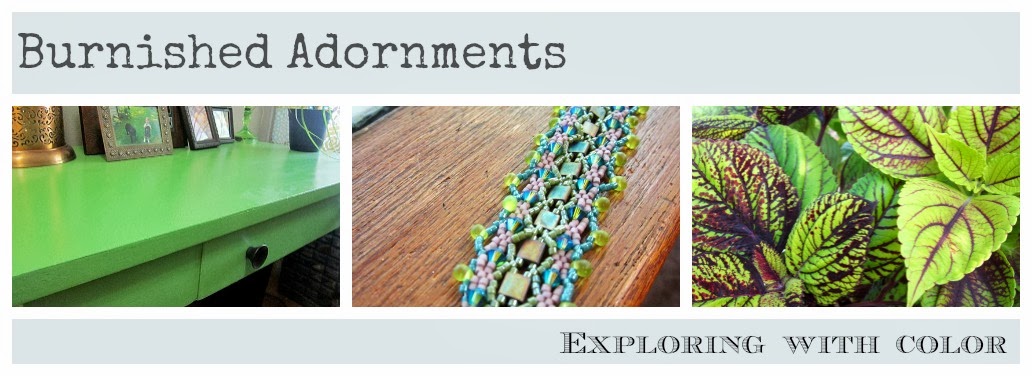Well, I spent the weekend ripping up carpet in my hallway. I got really lucky, there was no adhesive used, just staples! A lot of them, but I'll take it! I really didn't want to bust out chemicals to remove adhesive from the carpet padding.
That's me removing a tack strip, the hard way. We have big plans for this hallway.Something like this.
Holy cow, what was I thinking?! It makes me laugh everytime.
I also, painted my front door- twice this weekend. Not twice as in it needed two coats, but twice as in the first color clashed horribly with the wall color. I used this color on my bead cabinet and it looks great, here not so much. A warm yellow next to a cool yellow doesn't work. It's now white, and I'm still thinking about the next color it will be.
Okay, enough about my weekend, here's the second part to the How to Paint Wood Trim. If you missed the first part, you can check it out here.
I truly had a hard time finally deciding to paint the wood. There was absolutely nothing wrong with it, besides all of it needed re-stained On one hand, I love the look of wood trim, on the other we would love to eventually sell our house. After finishing this project in the one room, I found I loved the way the white trim looked so crisp and fresh. Well, I better because there was no turning back. I also discovered how it made the mint paint on the walls appeared so much darker, but I'll save that for another post.
Yeah, doorways bite to paint. Just saying!
This was a huge undertaking for me. I had never done anything like this before and knew how much work was ahead of me. All of the trim in the whole house looks like this and I knew if I took on this project I'd have to paint all of it!
Supplies: I got everything from Lowe's
Tape
Primer of your choice (I used two different kinds oil based and water based)
Sanding sponge or paper
Paint (I used Valspar Shooting Star)
After all the trim was washed, filled, sanded and caulked it was time to prime. I ended up using two different primers, because I ran out of the first one. The first one I used was oil based and my favorite. I feel like it covered way better, and you can use a lot less! I only needed one coat of the oil based as opposed to the three in some spots for the water based. I had way more more of the wood stain showing through with the water based. That didn't happen at all with the oil based. However, cleanup's a breeze with the water based and it's way more environmentally friendly.
*FYI- this is what the caulk looks like when it's dry and ready to paint. Goes on white, dries clear.
1. Tape off everything you don't want painted. I know a lot of people who have a steady hand and don't do this step. Me- I'm messy!
This is one of the reasons for priming, and the reason I like oil based primer. This was the first coat of primer and the stain was showing through it. That's why it took three coats of primer on some spots.
3. Sanding. I only sanded once between coats to keep the trim smooth. If you have any drips, don't be afraid to sand them down. If you skip this step and the primer has lumps and bumps you'll see it under the paint. Oh, and the oil based sands so much better than the water based.
Do these first to steps as many times as you need before you paint.
4. Paint. Since I was using a very white paint for the trim, I made sure I used a paint with primer. This may be overkill, but it worked out well. I also used a high gloss paint because I like the way it looks on trim and you can spot clean it. All the trim needed three coats.
5. Sand, again. This is were I messed up. I didn't do it and I found a few drips. Luckily they aren't in really noticeable places, which would drive me flipping crazy if they were. Just make sure you wait until the paint is dry.
Again, do these last two steps as many times as you want.
I used three coats of paint. The paint needs to be really dry. I usually let the coats dry over night. If you don't, you'll have a gloppy mess and it will undo all of your hard work. Painting and priming really don't take as many steps as the prepping steps.
I really love the way the white trim looks, nice and crisp. The white is more of a cool white. You could definitely pick up a warmer white. I actually matched it to the white in the windows. I'm glad I did, I feel like it opens the whole room up too.
*If you read the first part to this post you know I screwed up on the caulking and did it last. So, after I caulked I had to paint another coat on top of the caulk. Fun.
Have any of you taken on a project like this? I'd love to hear about it. I'd also, love to hear about any tips or tricks you might know.
Have any of you taken on a project like this? I'd love to hear about it. I'd also, love to hear about any tips or tricks you might know.





